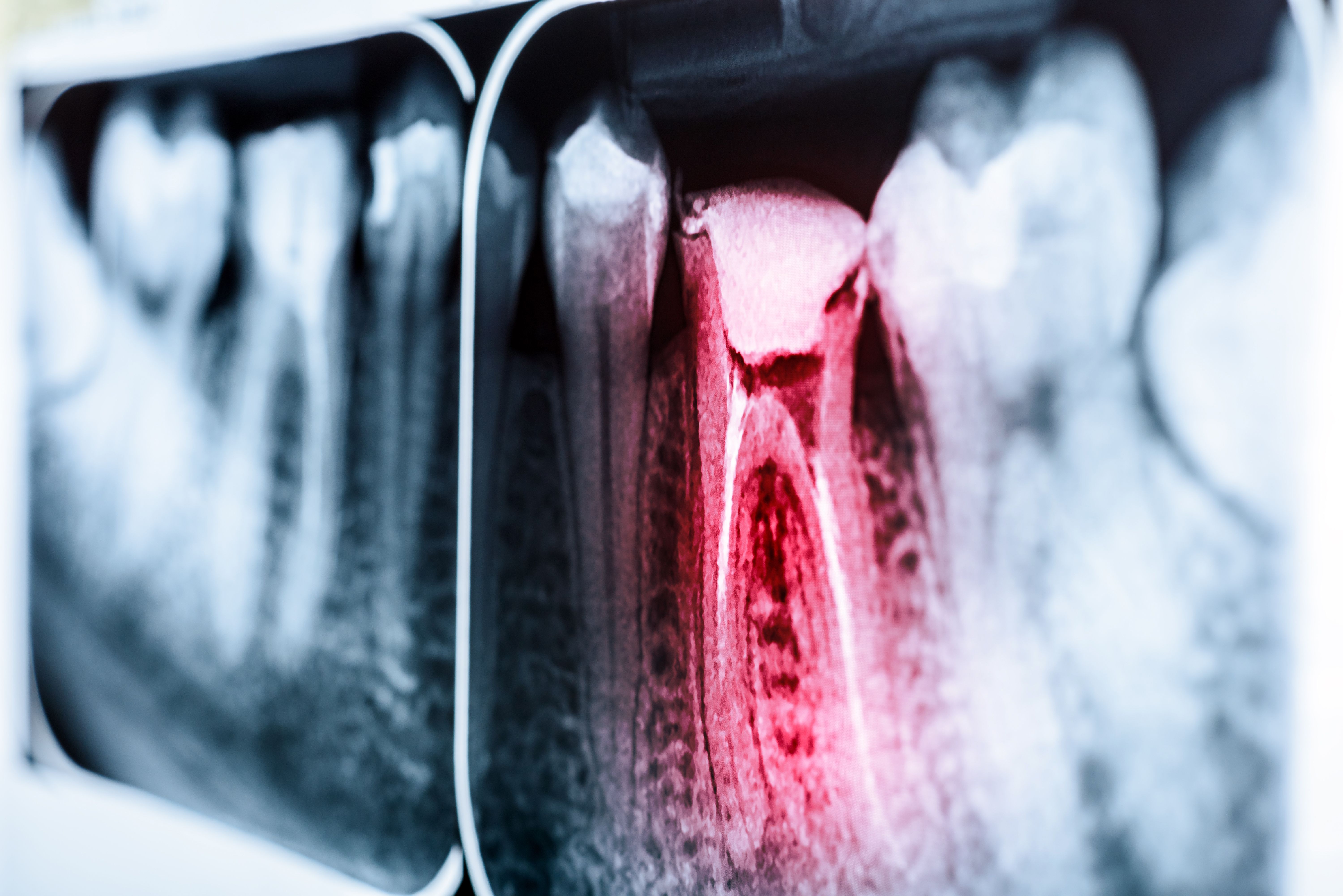Root Canal Therapy vs. Extraction
 Dental decay is the most common dental problem. As bacteria build up in the mouth, it creates a hard, sticky layer of plaque and tartar on the teeth. Plaque buildup eventually begins to eat away at healthy tooth enamel, leaving small openings in the outer surface of the teeth. These openings make it possible for bacteria to reach the pulp on the tooth, where there are sensitive nerves and tissues. Eventually, a root canal infection can develop.
Dental decay is the most common dental problem. As bacteria build up in the mouth, it creates a hard, sticky layer of plaque and tartar on the teeth. Plaque buildup eventually begins to eat away at healthy tooth enamel, leaving small openings in the outer surface of the teeth. These openings make it possible for bacteria to reach the pulp on the tooth, where there are sensitive nerves and tissues. Eventually, a root canal infection can develop.
Root canal treatment eliminates infection to preserve the tooth’s natural roots. In most cases, root canal therapy is the most appropriate option for an infected tooth. However, in rare instances, the tooth may need to be extracted. The experienced dentists at Artistic Expressions Dentistry discuss root canal therapy vs. extraction with our Philadelphia, PA patients to determine the best course of treatment for each unique situation.
Root Canal Therapy
Root canal therapy is a restorative dentistry treatment that allows patients to avoid tooth loss. During root canal therapy treatment, the dentist will remove all inflamed and infected tissues from the center of the tooth. A long, thin dental tool will then be used to clean the entire length of the tooth roots, ensuring that no bacteria remains in the tooth.
After the tooth has been thoroughly cleaned, it will be filled with a cement-like compound that maintains the structure of the tooth. As an added precaution, a dental crown will be bonded to the treated tooth. The dental crown strengthens the tooth and provides an extra layer of protection to prevent a future root canal infection.
The biggest benefit of root canal therapy is that it preserves the natural tooth and its roots. This not only avoids the need for tooth replacement, but it also ensures that the jawbone tissues continue to thrive. When a patient bites down, the roots of the tooth absorb the shock. This is what stimulates the jawbone so that new tissues continue to grow. By saving a tooth through root canal therapy, patients can also avoid bone loss in the jaw.
Extraction
In rare cases, a root canal infection may be caught too late for the tooth to be saved. If an examination determines that the roots of the tooth have completely died, it may be necessary to schedule an extraction. During a dental extraction, the mouth is numbed and the infected tooth is removed in its entirety. Although tooth extraction is not ideal, it can protect adjacent teeth from becoming infected. A tooth replacement procedure can then be provided to replace the tooth with a strong dental restoration.
Any time a tooth is extracted, it is vital that it be replaced. A dental restoration can preserve the strength of the smile, improve oral functions, and uphold the structure of adjacent teeth. We are happy to offer a wide range of treatments for missing teeth, including dental implants, which are the only dental restoration to replace both the roots and crown of a tooth.
Contact Us
If you are experiencing heightened tooth sensitivity or oral pain, you may be suffering from a root canal infection. It is important to treat root canal infections as early as possible so that the natural tooth can saved. To learn more about root canal therapy, contact us at your earliest convenience.


